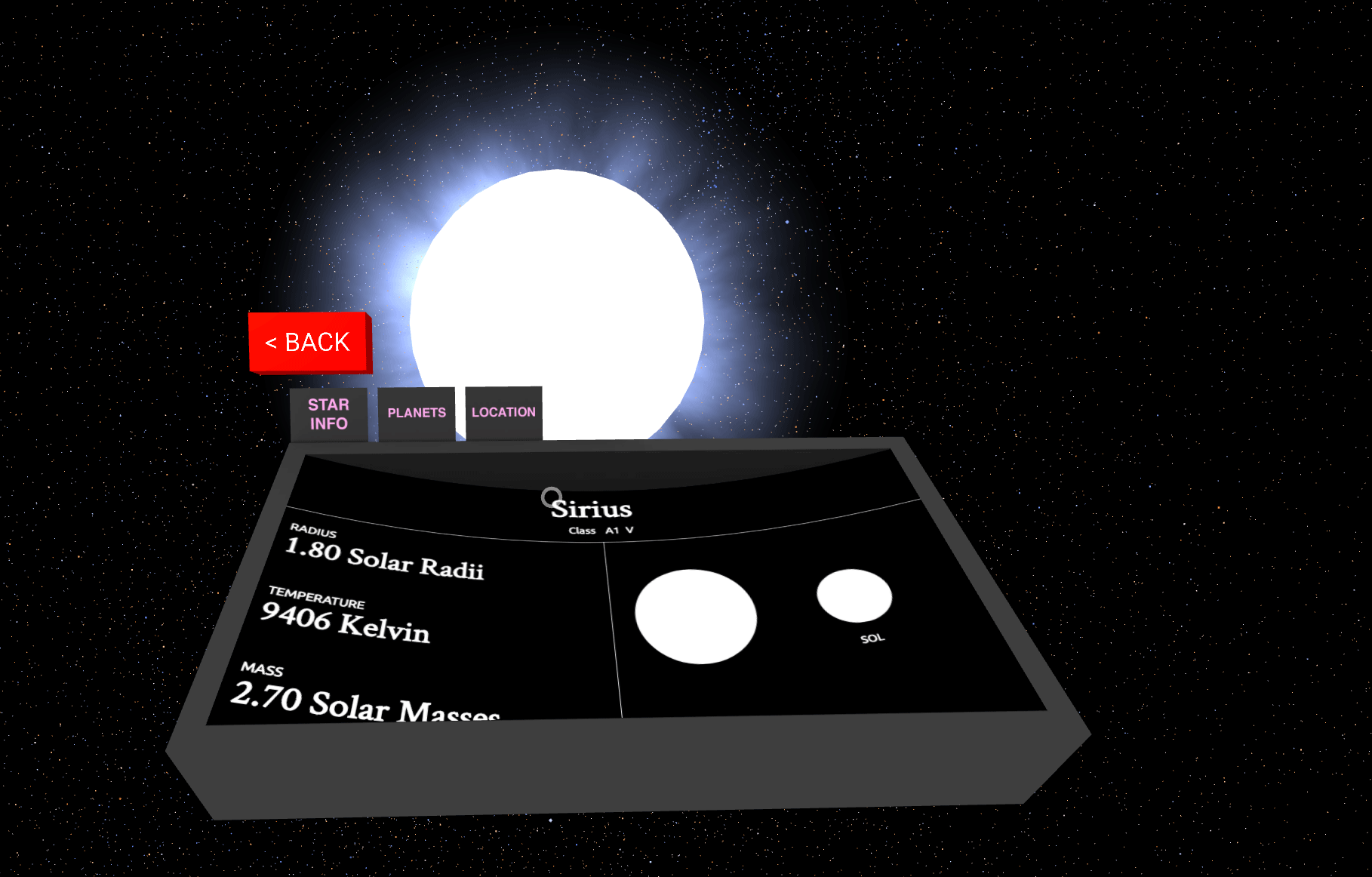Up There is a VR planetarium that contains true 3D positions and other information for over 100k nearby stars. Interact with any star to learn more about it, about any planets we've discovered orbiting it, and to see what the sky looks like from its point of view. Toggle constellation lines or highlights for stars with known exoplanets. See if you can find the sun without cheating.
TL;DR Visit the website
Install the Carmel browser, and then click the GearVR link on the Up There website. It should prompt you to insert your phone into the GearVR, and then the app will load. Use the controls on the side of your headset to move forward and back, interact with switches, or scroll forward and backward in time.
Open the Up There site in Chrome and hit the goggles icon in the bottom right, and then place the phone in your Cardboard compatible headset. A bluetooth gamepad is required for control. No time controls currently enabled.
If you're using an Oculus or Vive, get a copy of Firefox Nightly or Chromium that has WebVR enabled and visit the website. Limited controller support currently but many possibilities in the future.
This is a side project for me, so I have made it public and open source under the MIT License. There's a lot I wish it did that it doesn't do yet. I'll create tickets for new features I would like to implement, and if you'd like to help please get in touch in the comments on an feature you find interesting and I'll try to help you get started.
npm install
npm start
Then, load http://localhost:8080 in your browser.
npm run docs
Note: docs are INCOMPLETE at the moment, I'm chipping away at them when I can. They're being generated with docco.
I forked the wonderful A-Painter from Mozilla when I started porting this project over from Unreal Engine 4. It is wonderful boilerplate, and is a good structure to start with. They get a lot done with not a lot of code.
Star position and velocity data is sourced from the HYG Database, and it was processed through scripts to calculate radius, temperature, color etc. These are yet to be documented but will be included in this repository at a later date.
Exoplanet data was sourced from the NASA Exoplanet Archive and cross referenced with stars in the HYG Database where possible.
For bugs or feature requests, please submit an issue above. Pull requests and new ideas are welcome, and please create an issue when you start working on a new feature so I can help or let you know if it's already in the works. Additional questions can be sent to Charlie.
